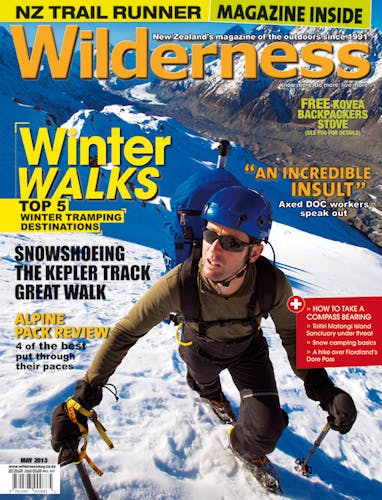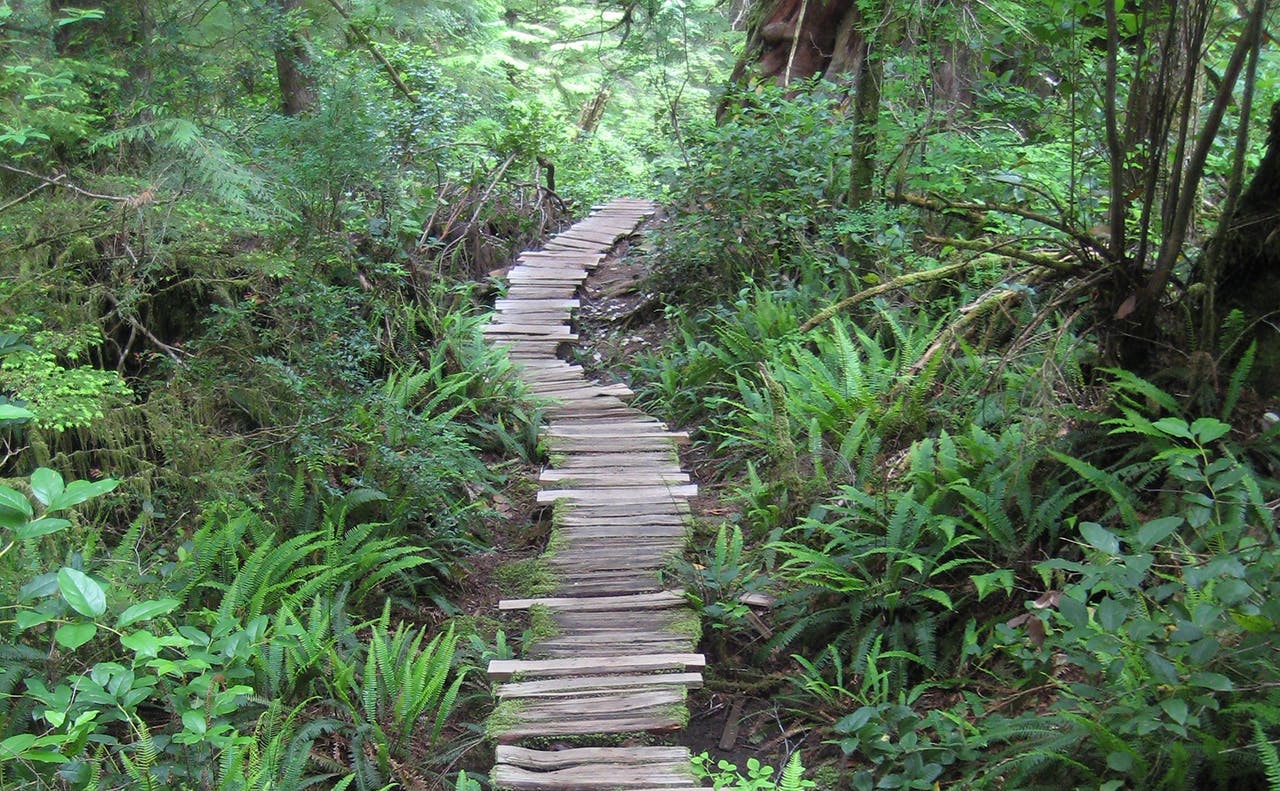Native timber sourced from damaged Christchurch houses could be used to build huts and other facilities in the backcountry
We’ve just moved into a house built in the 1930’s, tucked up a valley in Banks Peninsula. It’s made of wood, and in opening up a wall, and lifting the lino we’ve learnt more about its construction, and the timber choices of the day. Matai makes up the framing, and it’s such a solid timber we’re having to drill holes just to nail it. The floors are a dark reddy brown colour, and made of the tongue and groove rimu that was common for many years.
While such wood might come from our native forests, going for a walk in Montgomery’s Bush near Hilltop, immediately takes me into one. Ten minutes from the car is a gnarly totara, many centuries old, with roots roaming around the forest floor. Then it’s along a sheltered face where rimu, matai and miro also grow amongst the boulders and crags that line the volcano’s rim.
Twenty minutes further and you’re out into a paddock and scraggy scrub and rocky outcrops. All around are old totara stumps that date back to when the peninsula’s forestry industry was building Christchurch.
While the tops are now pasture, 200 years ago it was a remarkable forest that spanned the entire peninsula. Pockets only remain, though out at the 1000ha Hinewai Reserve there is an impressive reforestation project underway. Since the 1980’s the forest has been encouraged to return, and to again provide for native ecosystems.
Looking at the scale of the Christchurch rebuild, as whole suburbs pop up in a matter of months, it’s a relief that collectively we’ve realised newly cut native timbers have no place in today’s housing industry. Better such trees house kereru, tui and riroriro than suburban sprawl. And anyway, there’s a seemingly endless supply of pinus radiata for framing up and decking out your dream home.
But just as freshly milled native timbers don’t belong in our housing industry, the same can be said about the place of pinus radiata in our wilder places.
Take, for example, one of the most amazing places in this country: Ulva Island, tucked away in Rakiura’s Paterson Inlet.
Without predators, or pests, and full of kaka, totara, kiwi, rata, mohua, rimu, kakariki and miro, Ulva is like a journey back into Gondwanaland. Sit still and the tieke come to you. The forest is lush, the birdsong plentiful, and the various beaches (sandflies notwithstanding) are awesome places to hang out.
But while this feels like a place like no other, there’s also the constant presence of the very same construction industry that’s building our cities. Every stair and boardwalk is made of pinus radiata. It’s weird to see in such an ecologically diverse place, facilities that are built from trees grown from cloned seedlings. You can be sure that if any living version of this plant was found here it would be quickly destroyed.
The wet climate is not conducive to pinus radiata. In its natural state it rots quickly, so the timber is soaked in a toxic brew of heavy metals including chromium, cadmium and arsenic. It’s strange to realise these chemicals, which are known carcinogens and leach for many months, are allowed in such a pristine place.
There’s a spot on the island where these dilemmas come into focus. It’s where the track to West End Beach takes a sharp turn to work its way around a giant fallen totara. There’s enough timber in this single tree to build many hundreds of metres of boardwalk – a boardwalk that, because of totara’s natural chemistry, is so durable it would last hundreds of years.
But using that totara, is problematic. In using it, perhaps we will return to that same ‘develop-whatever-the-consequence’ ethos by which parts of this country were settled. As anyone with a fleeting interest in conservation knows, in the 1880’s alone, forests covering 14 per cent of New Zealand’s land area (like those across Banks Peninsula) were felled or burnt. To use native timbers in our public conservation lands, even now in the 21st century, still feels like it will reopen this never healed wound. Not to mention give the opportunity for some interests to call for more widespread milling of native forests.
Whichever path we take tells us less about our forests and more about ourselves. Travel on Meares Island, on British Columbia’s most western coast, and you’ll follow a boardwalk made entirely of native cedar that grew on the island. Builders have sawn boardwalk-wide rings of cedar trunks, then split them with axe and adze, before nailing them to sturdier joists also made from the same logs.
When eventually they rot, these timbers are thrown into the forest to decomposes alongside the rest of the fallen tree that they were grown and milled from, while freshly split lengths are used to replace them. It seems all that’s been brought to the island are some nails, and the skills to work the native timber.
Deciding whether to use native timbers on the tracks and huts in New Zealand’s wilder places is no easy choice. Is using windfall OK? And can we, if a bridge is needed, topple a tree? Or if that’s not acceptable should we plant rimu and totara at trail heads so future generations – once these trees reach maturity – can mill them to build the facilities of tomorrow?
One of the challenges Christchurch’s rebuild has thrown up is what to do with all the native timber that’s being salvaged from condemned buildings. Rather than ditching it, many, like the people behind rekindle.org.nz, are looking for ways to give these lengths of matai, rimu and totara another life.
Perhaps, also, these former native trees could be transformed by DOC into an iconic hut that finds itself a home in some backcountry valley, or even on the proposed overnight track that will run along the crater rim of Banks Peninsula?








